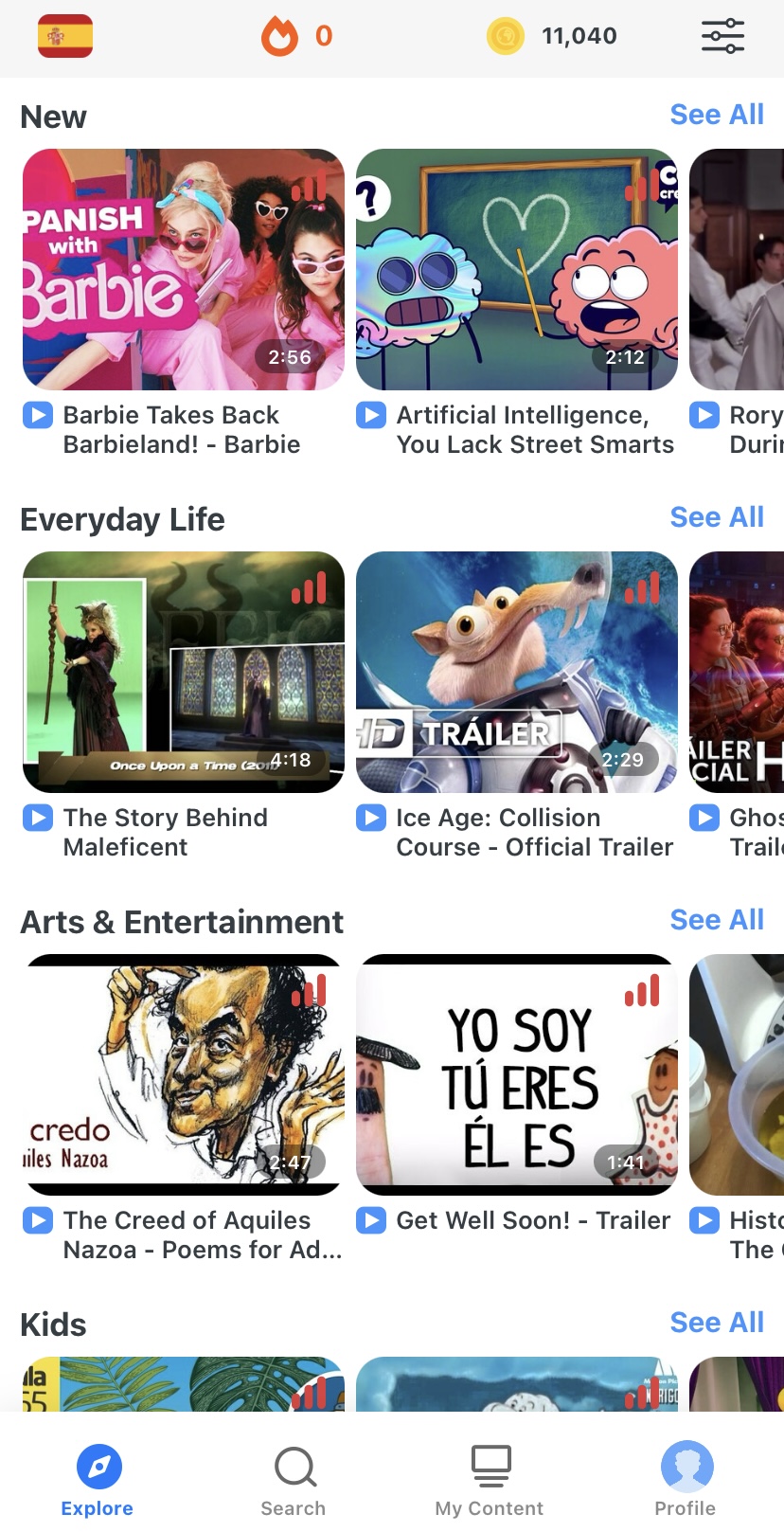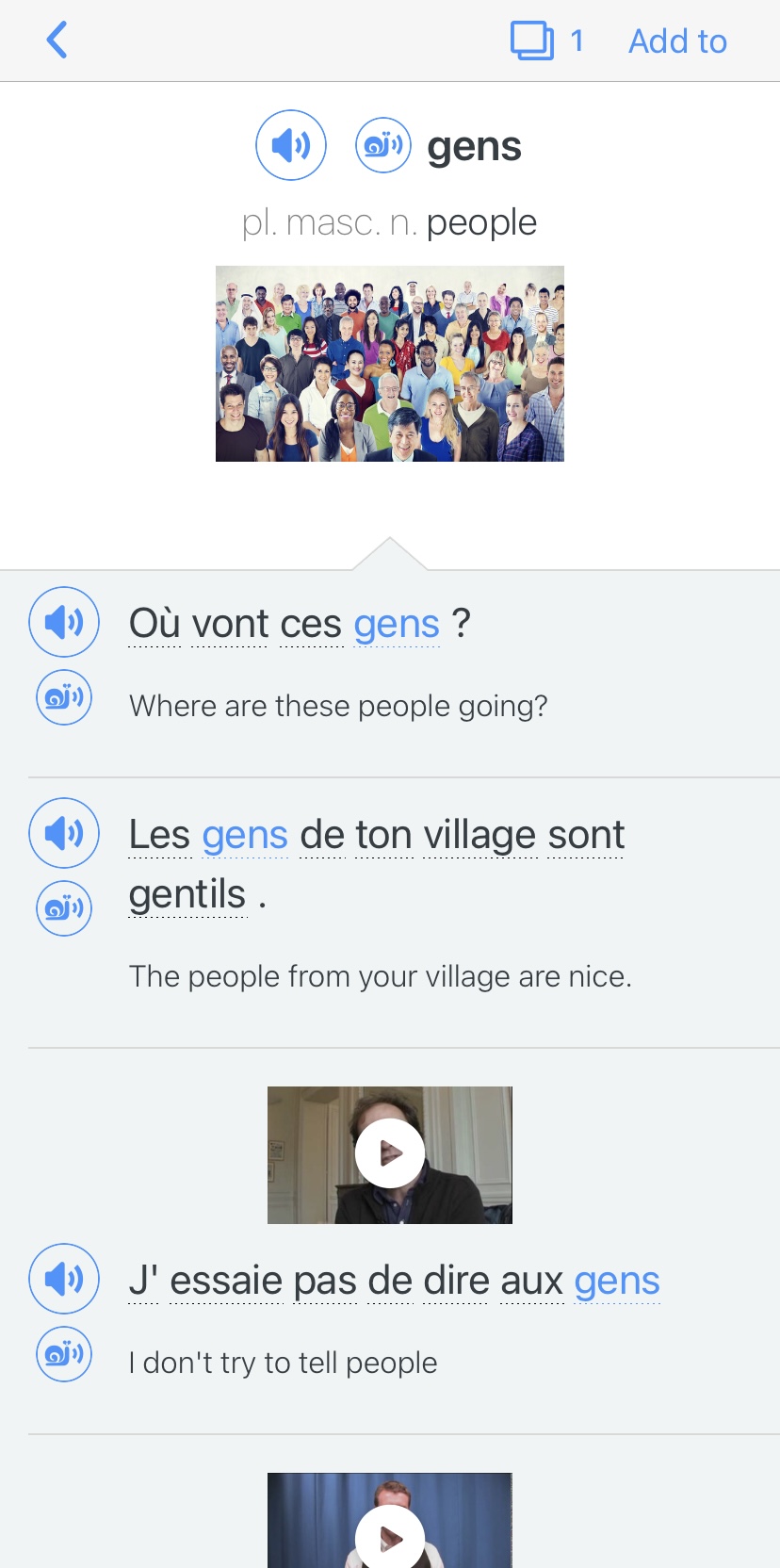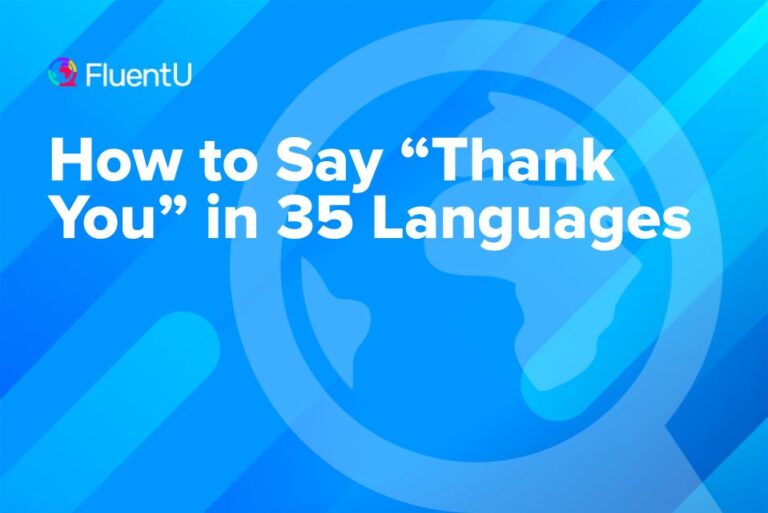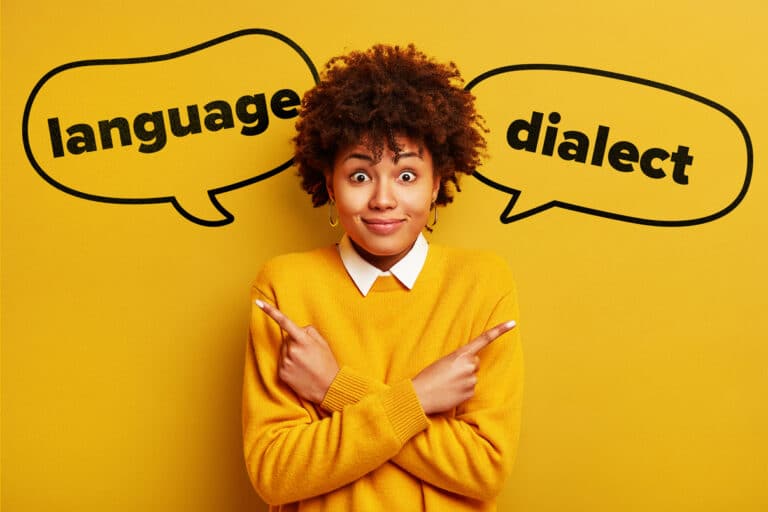Contents
- 1. English (1.5 billion speakers)
- 2. Mandarin Chinese (1.1 billion speakers)
- 3. Hindi (602.2 million speakers)
- 4. Spanish (550 million speakers)
- 5. French (274.1 million speakers)
- 6. Standard Arabic (274 million speakers)
- 7. Bengali (272.7 million speakers)
- 8. Russian (258.2 million speakers)
- 9. Portuguese (257.7 million speakers)
- 10. Urdu (231.3 million speakers)
- 11. Indonesian (199 million speakers)
- 12. Standard German (134.6 million speakers)
- 13. Japanese (125.4 million speakers)
- 14. Nigerian Pidgin (120.7 million speakers)
- 15. Marathi (99.1 million speakers)
- 16. Telugu (95.7 million speakers)
- 17. Turkish (88.1 million speakers)
- 18. Tamil (86.4 million speakers)
- 19. Yue Chinese (85.6 million speakers)
- 20. Vietnamese (85.3 million speakers)
- And One More Thing...
Top 20 Languages with the Most Speakers in the World

Language learners are smart. That’s why it’s natural for them to wonder—what are the most commonly spoken languages in the world?
If you’re keen on figuring out what language to learn and expect to use frequently, or if you’re just plain curious, check out this list of 20 languages with the most speakers in the world, complete with fun facts.
All numbers were collected from the statistical websites Ethnologue and Statista.
Download: This blog post is available as a convenient and portable PDF that you can take anywhere. Click here to get a copy. (Download)
1. English (1.5 billion speakers)
Where It’s Spoken: United States, Canada, United Kingdom, Australia, South Africa, New Zealand, etc.
Fun Facts:
- Famous writer and poet William Shakespeare was responsible for creating over 1000 English words commonly used today. These include “bedroom,” “fashionable” and “swagger.”
- It’s stated that every English syllable must have a vowel, but not necessarily a consonant. However, there are technically English words that contain no vowel letters: examples include the words “myth,” “dry” and “hymn.”
- Although it’s the most commonly used language there, English is not federally considered the official language of the United States.
- All international pilots and air traffic controllers are required to understand and speak English.
2. Mandarin Chinese (1.1 billion speakers)
Where It’s Spoken: China, Taiwan, Singapore
Fun Facts:
- Mandarin Chinese officially has over 50,000 written characters, but only a few thousand (around 2,000 to 3,000) are considered enough for common usage.
- Technically, there is no “Chinese alphabet.” Written characters are symbolic and have their own meanings, as opposed to being phonetic and representing sound.
- Mandarin Chinese is a tonal language consisting of four different tones plus a neutral tone. By varying your pitch, you can change the meaning of one word.
- Mandarin Chinese has no verb conjugations and very limited noun pluralization (to the point where it’s typically said that there are no plural nouns in Mandarin).
3. Hindi (602.2 million speakers)
Where It’s Spoken: India, Nepal, Pakistan, Bangladesh, Fiji
Fun Facts:
- Unlike English, Hindi is a phonetic language, so pronunciation closely matches the written letters.
- Hindi is derived from the ancient classical language Sanskrit.
- Many words in the Hindi lexicon are Persian and Arabic in origin.
- Activist Mahatma Gandhi advocated Hindustani, a mix of Hindi and Urdu, to be the “unifying language” of India.
4. Spanish (550 million speakers)
Where It’s Spoken: Mexico, Colombia, Spain, Argentina, United States
Fun Facts:
- Spanish is derived from Latin, which was once spoken in the Roman Empire. More specifically, Spanish is said to come from Vulgar Latin, the dialect spoken by commoners.
- Spanish uses upside-down question marks and exclamation points. These inverted symbols are written out at the front of the sentence. The correctly-positioned question mark or exclamation point is also written out at the end of the sentence.
- Spanish is the third most spoken language on the Internet.
- Spanish is protected by the Royal Spanish Academy (Real Academia Española), which ensures the proper usage of the language. It was first founded in 1713 under the then king of Spain.
5. French (274.1 million speakers)
Where It’s Spoken: France, Congo, Canada, Belgium, Luxembourg
Fun Facts:
- There are many French words used commonly in English speech and text (such as silhouette, critique, café). The two languages have made many encounters throughout history.
- There is a special council known as L’Académie Française that serves to “protect and promote the French language.” Only 40 members can be part of this council.
- After English, French is the second most widely learned foreign language.
- The letter “w” is not part of the original French alphabet. There are hardly any natural French words that start with “w.”
6. Standard Arabic (274 million speakers)
Where It’s Spoken: Saudi Arabia, Algeria, Egypt, United Arab Emirates, Jordan, Libya
Fun Facts:
- There is no letter capitalization in Arabic.
- The Arabic alphabet is known as an “impure abjad.” Letters officially represent consonants only, but there are symbols to indicate vowel sounds.
- Arabic script is typically written right to left, although numbers and mathematical expressions and phrases are written left to right. The script is also almost always written in cursive or is at least joined.
- Arabic has multiple terms solely for the camel animal (100 or more).
7. Bengali (272.7 million speakers)
Where It’s Spoken: Bangladesh, India, United Arab Emirates
Fun Facts:
- There is a holiday dedicated to Bengali: “International Mother Language Day,” February 21. On that day in 1952, the country of Bangladesh protested for the recognition of the Bengali language.
- The Indian national anthem was originally written in Bengali before becoming adopted into Hindi.
- In Bengali, nouns are not assigned a gender—therefore, there is no masculine or feminine pronoun.
- In several contexts, Bengali is considered a “zero copula” language—that is, the subject is directly connected to the predicate, with no connecting “to be” verb conjugation.
8. Russian (258.2 million speakers)
Where It’s Spoken: Russia, Belarus, Kazakhstan, Kyrgyzstan, Ukraine
Fun Facts:
- Astronauts that are expected to work in the International Space Station are required to learn Russian. Reasons include the fact that Russian astronauts also work at the ISS, and the Soyuz spacecraft that can travel out of and to the station operates entirely in Russian.
- Whether a Russian noun is “animate” or “inanimate” can affect sentence grammar.
- Written Russian utilizes the Cyrillic alphabet, which was based on the Greek alphabet.
- There are two main words to specify the color blue in Russian vocabulary: голубой (light blue) and синий (dark blue). There is no individual word that just means blue.
9. Portuguese (257.7 million speakers)
Where It’s Spoken: Brazil, Portugal, Angola, Mozambique
Fun Facts:
- The letters “k,” “w” and “y,” were officially added to the Portuguese alphabet in 2009, namely because other foreign words often used them.
- The Portuguese language has a noticeable degree of Arabic influence, particularly in terms of vocabulary.
- The majority of the world’s Portuguese speakers actually live in Brazil (in South America), not Portugal (in Europe).
- Brazilian and European Portuguese are the language’s two main variants, and while they’re mutually intelligible, they vary quite noticeably in spelling and pronunciation.
10. Urdu (231.3 million speakers)
Where It’s Spoken: Pakistan, India, Bangladesh
Fun Facts:
- The Urdu language is often considered a poetic one, due to its rich history of prose and poems.
- Urdu is mutually intelligible with Hindi, sharing similarities in vocabulary, grammar and phonology.
- Urdu is written from right to left, as is typically the case of languages whose written scripts are derived from Arabic.
- The Urdu language was a significant unifying factor for Muslim communities living in 19th-century British-run India.
11. Indonesian (199 million speakers)
Where It’s Spoken: Indonesia, Malaysia, Singapore, Brunei
Fun Facts:
- Indonesian is derived from the Malay language, and it’s sometimes considered a dialect of it.
- The Bahasa Indonesian language was officially “born” as the national language of the country in 1928.
- There are no tenses in Indonesian, so verb conjugation is not a concern for learners of the language.
- Indonesian uses the Latin alphabet, due to Indonesia’s long history of being a Dutch colony.
12. Standard German (134.6 million speakers)
Where It’s Spoken: Germany, Austria, Switzerland, Luxembourg, Belgium, Liechtenstein
Fun Facts:
- German classifies nouns into three genders: male, feminine and neuter. These genders are expressed via articles. It’s not always the case that the noun gender reflects the expected gender of the object in question: for example, the German word for a young woman, das Mädchen, is neuter-gendered.
- Every German noun, whether it’s a person, animal, place or thing, is capitalized.
- The German alphabet has a unique letter: ß, also known as eszett. It is pronounced, and often alternatively written as, “ss.”
- German is the most widely spoken language in the European Union.
13. Japanese (125.4 million speakers)
Where It’s Spoken: Japan, Hawaii, South Korea
Fun Facts:
- Japanese is one of the fastest spoken languages in the world, at a rate of 7.84 syllables per second.
- There are three writing systems used in Japanese: Hiragana, Katakana and Kanji. Katakana is specifically used for writing out foreign words, while Kanji consists of Chinese characters. Any written Japanese phrase can consist of characters from each script.
- There are multiple ways to say “I” in Japanese, depending largely on age, gender and etiquette.
- Because it doesn’t seem to share a strong connection with any single language family, Japanese used to be considered a language isolate. However, it’s now considered to be part of the Japonic language family alongside the languages of the Ryukyu Islands.
14. Nigerian Pidgin (120.7 million speakers)
Where It’s Spoken: Nigeria, Ghana, Sierra Leone
Fun Facts:
- The language is a lingua franca and was developed hundreds of years ago in order to facilitate trade between native Nigerians and foreign merchants.
- Although it has had a reputation of being an “inferior” language, Nigerian Pidgin is currently used by all kinds of speakers of varying social classes and education levels. It’s largely informal in nature, with the more standard Nigerian English being preferred for formal contexts.
- There is no strict orthographic system for Nigerian Pidgin. The language is rarely written out.
- It is sometimes considered a type of “broken English.”
15. Marathi (99.1 million speakers)
Where It’s Spoken: India, Israel, Mauritius
Fun Facts:
- Marathi is the official language of the Indian state of Maharastra.
- There are about 42 different Marathi dialects.
- Marathi uses an alphabet that consists of 52 letters: 36 consonants and 12 vowels.
- In the literature of Indo-Aryan languages, the Marathi’s (alongside Bengali’s) is considered the oldest, dating back to about 1000 AD.
16. Telugu (95.7 million speakers)
Where It’s Spoken: India, South Africa
Fun Facts:
- In the 2012 World Alphabet Olympics, Telugu script was ranked second-best (losing to Korean Hangul).
- It is sometimes called “Italian of the East,” due to the fact that all Telugu words end in a vowel sound.
- Telugu is the most spoken of the four Dravidian languages.
- According to several reports, Telugu is the fastest-growing language in the United States.
17. Turkish (88.1 million speakers)
Where It’s Spoken: Turkey, Cyprus, parts of Eastern Europe
Fun Facts:
- For many years, written Turkish used the Arabic alphabet, even though Turkish and Arabic share no linguistic and historical roots. In 1923, the language’s Arabic script was replaced with a Latin one to increase literacy.
- There are no definite articles in Turkish grammar. It does have one indefinite article: bir.
- As an agglutinative language, Turkish words receive suffixes/endings to create new meanings or illustrate whole concepts.
- The Turkish language follows a concept known as “vowel harmony.” Words utilize specific vowels so that they follow certain patterns.
18. Tamil (86.4 million speakers)
Where It’s Spoken: India, Sri Lanka, Singapore
Fun Facts:
- Tamil is considered the oldest surviving language in the world. It’s estimated to be about 5,000 years old.
- Long ago, palm leaves were a common writing document for the Tamil language. It may be that the elegant, curly nature of written Tamil letters facilitated the task of scribing it on the leaves.
- Tamil is considered a classical language due to its rich and ancient history.
- The language is also revered and personified as a deity known as Tamil Thai.
19. Yue Chinese (85.6 million speakers)
Where It’s Spoken: Southern China, Hong Kong, Macau
Fun Facts:
- Yue Chinese is also commonly referred to as Cantonese and is the most commonly spoken Chinese dialect in parts of southern China and Hong Kong.
- Cantonese is considered to have six (or even nine) tones, compared to Mandarin’s four.
- Cantonese was originally the most spoken Chinese dialect in American Chinatowns, although Mandarin Chinese has steadily become more common over the years.
- As there is no official Cantonese written system, Cantonese speakers write in traditional Chinese (as opposed to Mandarin’s tendency to write in simplified Chinese). But in recent times, a more Cantonese-friendly writing system has taken root, particularly in social media contexts.
20. Vietnamese (85.3 million speakers)
Where It’s Spoken: Vietnam, Cambodia, Laos
Fun Facts:
- Vietnamese is considered a minority language in the Czech Republic, due to the country’s high concentration of Vietnamese inhabitants.
- Although they belong to different language families, Vietnamese shows notable influence from Chinese languages (such as in its vocabulary and use of tonality).
- There are no articles or verb conjugations in Vietnamese.
- The Vietnamese writing system (quốc ngữ) uses the Latin alphabet and was originally devised by missionaries in the 17th century.
So, have any of the languages on the list piqued your interest?
Any of them are great and useful to learn, so go ahead and dip your toes into as many as you’d like before dedicating yourself to one or a few. And for more information, check out our post on the most studied languages in the world.
For instance, FluentU’s language learning program gives you access to 10 languages at the same time (Spanish, French, English, Chinese, German, Japanese, Russian, Italian, Korean and Portuguese).
FluentU takes authentic videos—like music videos, movie trailers, news and inspiring talks—and turns them into personalized language learning lessons.
You can try FluentU for free for 2 weeks. Check out the website or download the iOS app or Android app.
P.S. Click here to take advantage of our current sale! (Expires at the end of this month.)

After all, picking up a language goes beyond vocabulary—it should also be an opportunity to get informed about a country’s culture and history.
And One More Thing...
If you're like me and love learning languages through real-world content, FluentU is a game-changer. With FluentU, you're not just memorizing words—you’re learning how native speakers actually use them.
With our newest feature, you can now bring FluentU’s interactive tools to any subtitled content on YouTube or Netflix—or even import YouTube videos directly into your FluentU account!
You’ll also get access to a huge variety of content in our curated video library, from movie trailers to news clips, music videos, and more. The best part? FluentU makes this native-language content accessible for learners of all levels.
While you watch, you can tap on any word in the interactive subtitles to see a definition, an image, audio, and useful example sentences. Want to practice new words later? Add them to your flashcards with one click. No more pausing to look up and write down new words!
And FluentU helps you actually remember what you learn with personalized quizzes, plenty of example sentences, and extra practice with the words you find difficult.
Ready to start learning in a more natural, immersive way? Try FluentU on your computer or tablet, or download the FluentU app from the App Store or Google Play. Click here to take advantage of our current sale! (Expires at the end of this month.)











